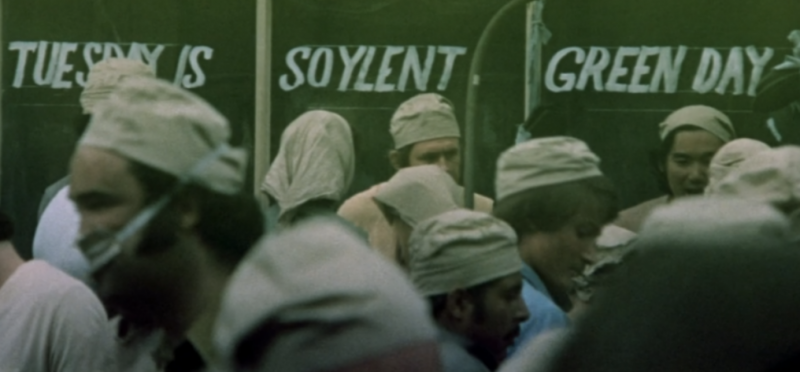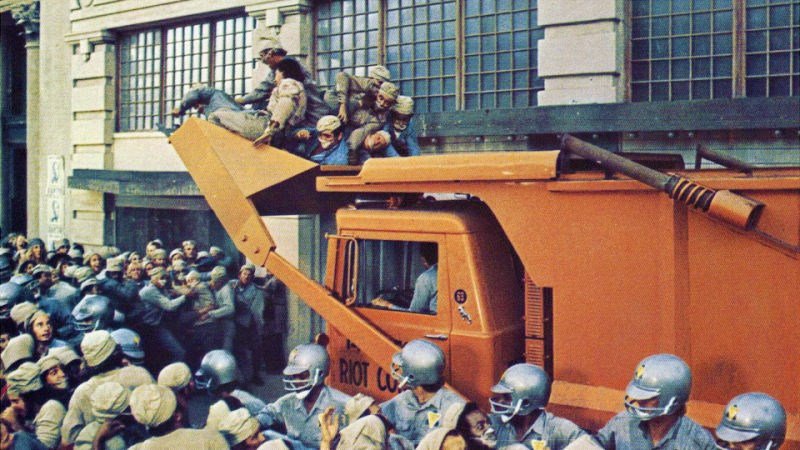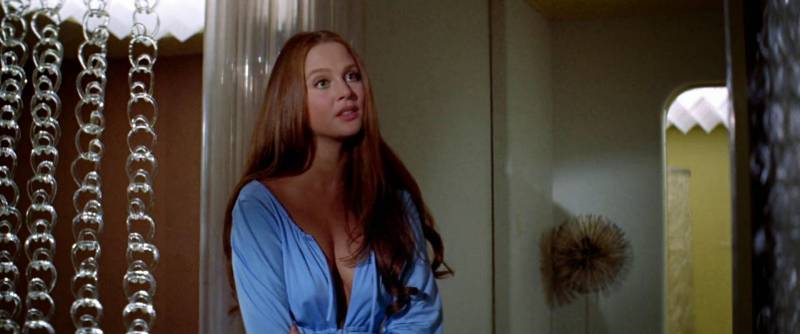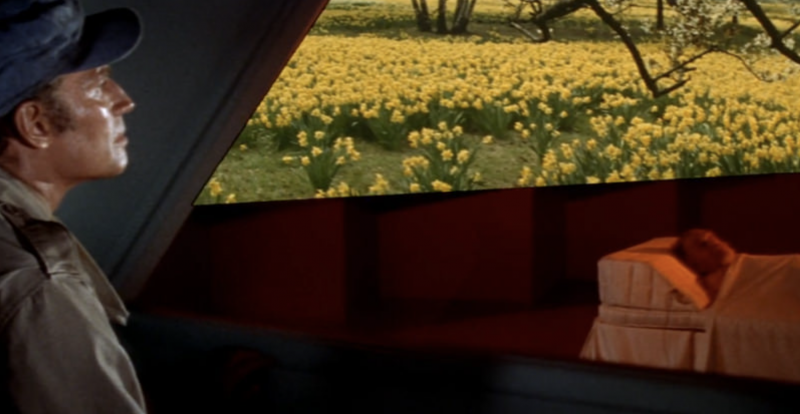THE YEAR: 2022
THE PLACE: NEW YORK CITY
THE POPULATION: 40,000,000
So begins the sweatiest dystopia in all of movie history, Soylent Green. The 1973 movie starts as it means to go on: IN ALL CAPS AND YELLING AT YOU.

THE YEAR: 2022
THE PLACE: NEW YORK CITY
THE POPULATION: 40,000,000
So begins the sweatiest dystopia in all of movie history, Soylent Green. The 1973 movie starts as it means to go on: IN ALL CAPS AND YELLING AT YOU.
It stars Charlton Heston, an actor you may remember from such apocalypse movies as 1968’s Planet of the Apes (intelligent primates are coming to get us!) and 1971’s The Omega Man (germ warfare and vampires are coming to get us!). Heston’s third stab at predicting the apocalypse is probably the most realistic, however, because Soylent Green focuses on a hopeless, relentlessly grim world that’s been ravaged by climate change. Which shouldn’t be a stretch to imagine for any Bay Area residents who lived through 2020’s Orange Day.
Based on Harry Harrison’s 1966 novel Make Room! Make Room!, the movie presents modern day New York as an overpopulated hellscape. Here, a jar of strawberry jam costs $150, and the one percent hides out in penthouses, ignoring the plight of the everyday man. It’s a world in which everyone wears masks, the only people with reliable transport are sanitation workers, and it’s hard to get up to your crappy apartment through all the random people hanging out on your front steps. In short: an incredibly accurate depiction of New York (jk NYC, jk).

The humans of Soylent Green are all in competition for a very limited supply of unappetizing processed food, most of which is made from soybeans. (Ten bucks says Harry Harrison hated tempeh.) Half the city is unemployed and living in poverty, so most have to make do with yellow soylent, soylent crumbs and soylent buns for sustenance. The thing everyone actually wants to eat is soylent green—a more nutritious product purportedly made from ocean plankton.
Soylent green comes in smooth flat squares and is distributed in the smogged-up city every Tuesday. When supplies run out, windows are smashed, yellow soylent is trampled underfoot and riots ensue. Police respond to this by scraping screaming people up into bulldozers and carting them away. This is the first thing I’d seen in a while that made those weird unmarked minivans arresting people at the 2020 Portland protests seem slightly less outrageous.

The plot hinges on Heston’s grizzled investigator, Detective Thorn, trying to solve the murder of Simonson, an executive for the Soylent Corporation. Simonson was killed at home in “unit 2020” of a fancy building. (Definitive proof that 2020 has been where bad things happen since at least 1973.)
In life, Simonson lived with an indentured sex slave named Shirl, whose super-demeaning professional title is “furniture.” Shirl floats around the place in low cut maxi dresses, looking longingly at men who don’t deserve it, talking too softly through pouted lips, and gazing wistfully at walls.
I am 99% certain Shirl is what Lana Del Rey has based her entire personality on.

Shirl and the other “furniture” she’s friends with get to spend their one day off a month lounging around together looking effortlessly hot, drinking cocktails, smoking, and reading each other’s tarot cards. (Fairly accurate Gen Z vibes, if I’m honest.) After Simonson’s murder, Thorn briefly questions Shirl, then demands she have sex with him. Shirl responds to this by falling in love with Thorn—because this movie was made by men in the 1970s.
Thorn’s roommate, Sol (Edward G. Robinson) is older, wiser and more depressed than Thorn on account of the fact that he remembers the world as it was before the “greenhouse effect” started “burning up” the planet. Sol eventually opts to get himself euthanized, lured in by the promise of a 20-minute nature video, nice lighting, and some classical music. But it is Sol who first discovers why Simonson was murdered, and it is Sol who first discovers the secret ingredient in soylent green. (Thorn is pretty useless imo…)

The grand finale of Soylent Green comes as Thorn tries to tell everyone the secret ingredient of their favorite food, before it’s too late. “Soylent green is people!” he yells repeatedly in a very crowded room. “Soylent green is people!” Unfortunately, that phrase sounds more like a philosophical concept than a warning about cannibalism, so it’s unclear if his message is received before he’s carted away on a stretcher.
Whether or not Thorn’s discovery changes anything in the world of Soylent Green is not the point. The point is a warning about the exhaustion of Earth’s resources. The point is about the horrors of climate change. And the point is a 2022 in which 99% of humanity is without hope or help. And while a lot of us, two years into this relentless pandemic, think we can relate to that last point in particular, Soylent Green is actually very good at making you grateful for what we do have. Like places to hike and food not made of human flesh.
Happy 2022, everyone!

‘Soylent Green’ is available to rent now via YouTube, Amazon Prime, Vudu and Apple TV.